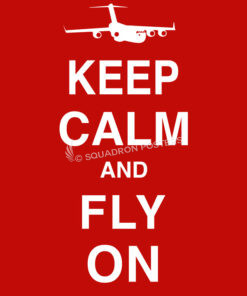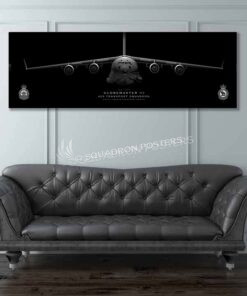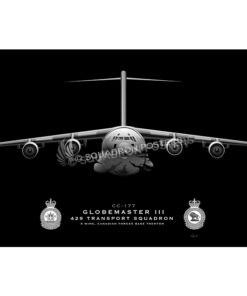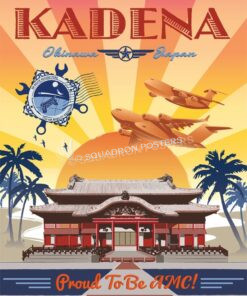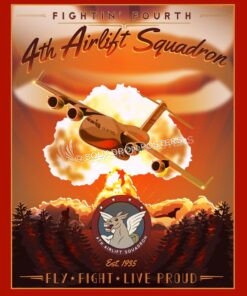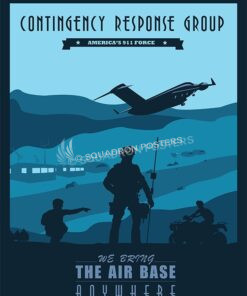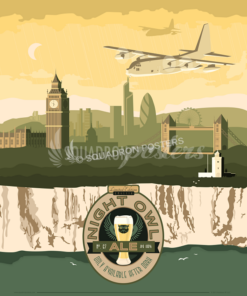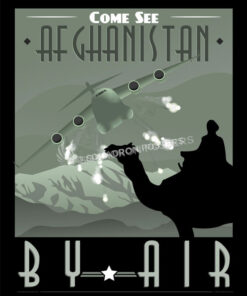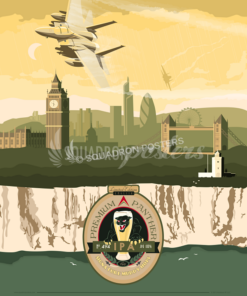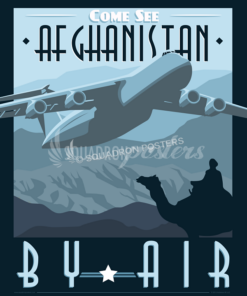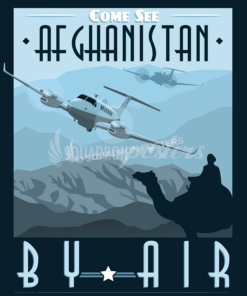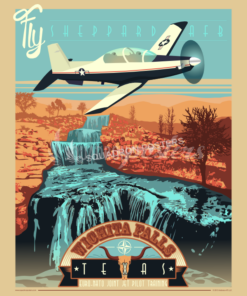Charleston AFB C-17 Special Operations Low Level (SOLL II)
Charleston AFB C-17 Special Operations Low Level (SOLL II) poster art.
SOLL II Aircrew out of Charleston, SC are experts in flying special forces on night vision goggles into and out of combat zones on C-17s. They fly low level routes below radar or can fly high, secretly letting spec ops jump HALO (high altitude – low opening) and drift silently into the bad guy’s backyard. Thank you SOLL II Loadmasters and Pilots for Delivering The Sting! Shortly after September 11, 2001 and the U.S. War on global terrorism, a strategic and tactical change in the use of airlift forces was realized in implementing the full potential capabilities of the newest USAF airlifter, the C-17A Globemaster III. With this an elite unit within AMC’s airlift forces, the SOLL II C-17A’s at Charleston AFB provide the outstanding results that combat commanders need.
The first-ever C-17 combat landing using night vision goggles occurred in November 2001. The sortie was one of 64 flown by five aircrews from Charleston Air Force Base, S.C., during a period of eight days in which they landed nightly on an unlit Afghanistan dirt strip, delivering 481 passengers and 970 short tons of equipment to assist a Marine unit, Task Force 58, according to Air Force news reports. The 437 AW is responsible for flying and maintaining the C-17 Globemaster III jet cargo aircraft, the newest aircraft in the AMC airlift system. Its mission is to command assigned airlift and supporting units; provide for the airlift of troops and passengers, military equipment, cargo and aeromedical airlift and to participate in operations involving the airland or airdrop of troops, equipment and supplies when required.

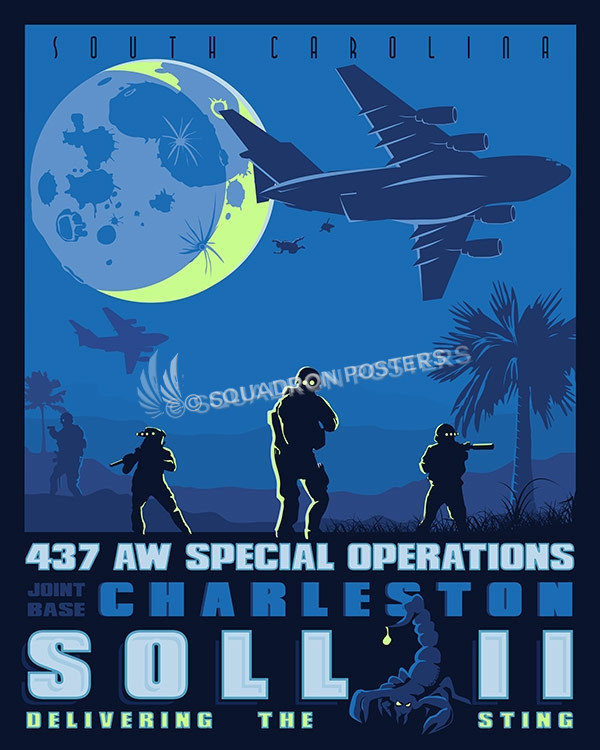
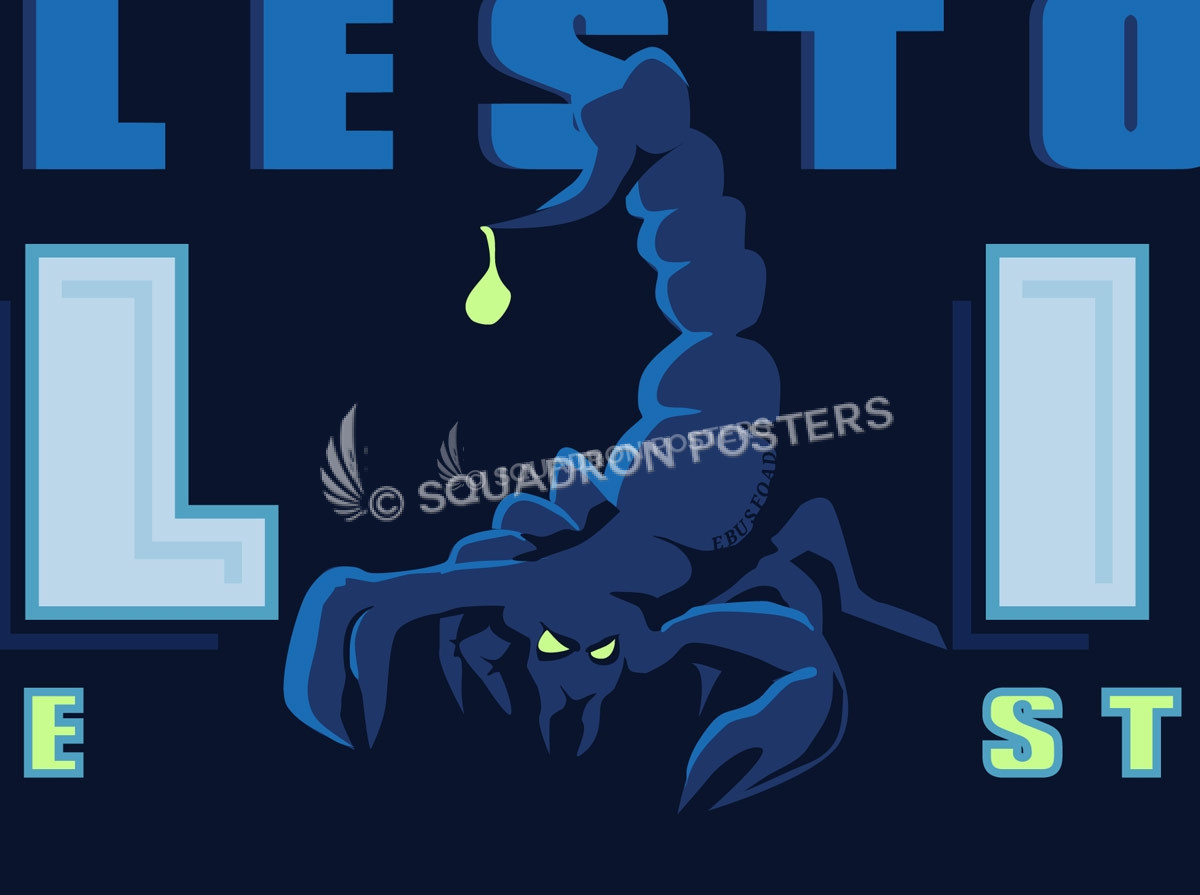
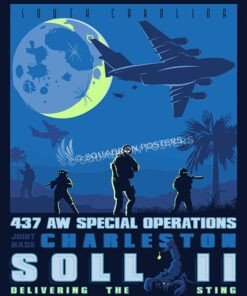
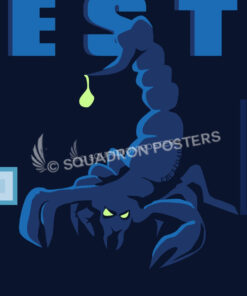
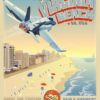


,e_distort:arc:100/w_3500/if_h_gt_1110/w_2500,h_700/if_end/e_outline:14,co_rgb:130600/fl_layer_apply,e_overlay,g_north,y_120/co_$background,l_text:HanleyPro-Block.otf_150:$(line2)/w_3500//if_h_gt_530/h_530,w_2000/if_end/e_outline:14,co_rgb:130600/fl_layer_apply,e_overlay,g_south,y_410/co_rgb:110500,l_text:HanleyRough-Script.otf_250:$(line3)/fl_layer_apply,g_south,y_120/c_scale,h_2300,l_$patch1/y_-150,e_overlay,fl_layer_apply/c_scale,h_2300,l_$patch1/y_-150,e_contrast:50,o_20,fl_layer_apply/l_leather:leathgrunge3/fl_cutter.layer_apply/u_leather:brownjacket2.jpg/bo_500px_solid_rgb:582811///t_brownpatchfeat///leather/brownjacket2.jpg)


